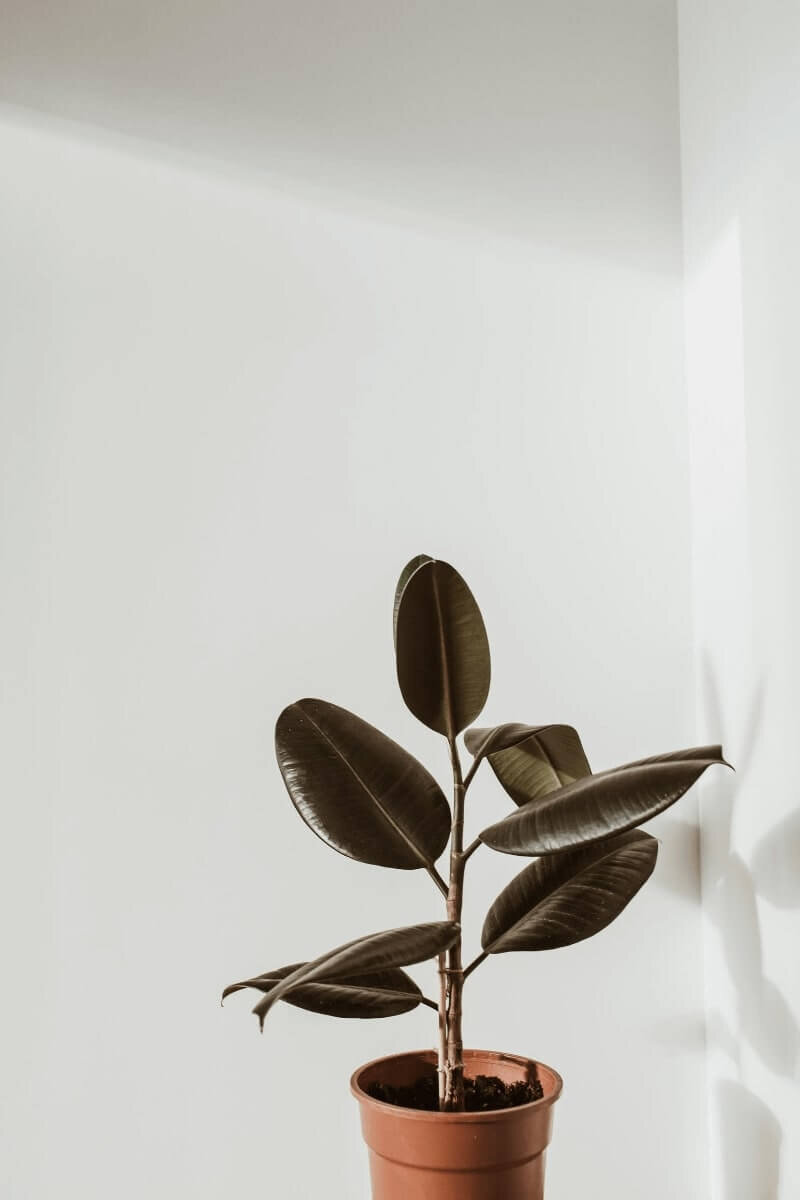5 Hard-to-Kill Houseplants to Purify Your Space
This blog post may contain affiliate links. We may earn a small commission for any purchases made through these links. Click here for the disclosure statement.
I love houseplants. However, if you asked my fiance, he would tell you that I can’t grow anything to save my soul. I also frequently tell him that I swear I had a green thumb in college. If you had come over to any apartment I lived in during my 20s, you would have been two things: houseplants and cats.
But, somewhere along the way, I seem to have developed an issue with keeping indoor plants alive and that is incredibly aggravating to someone who simply wants good air quality in their home!
Poor indoor air quality
Even though you might consider yourself a neat freak, indoor air pollutants have consistently ranked highest in environmental health consider. In fact, these indoor environments can cause “sick building syndrome,” due to the amount of pollutants that we breathe in daily. According to the EPA, Americans spend almost 90% indoors, where concentrations of air pollutants can be up to 5 times higher than outdoors.
These pollutants come from a variety of sources, such as furnishings, upholstery, pesticides, lead, and even asbestos. Even “natural sources” can be a pollutant, such as mold, pet dander, and pollen. All of these can cause symptoms, such as: irritation, headaches, nausea, and dizziness, and sometimes even cancer.
What you can do
As scary as this may sound, there is something that you can do. Adding plants to your indoor spaces is a great way to filter these indoor pollutants and create cleaner air. Plants purify the air, making them a great addition to any space.
How does it work? If you were paying attention in school, plants take in carbon dioxide, and “exhale” the oxygen that we need to breathe through photosynthesis. But, plants can also absorb some of these pollutants at the same time, thereby removing them from the air. In fact, the soil that you plant your indoor friends in could help as well. Microorganisms in the soil are responsible for helping clean the air, as well. Plants also help to boost our natural mental energy, leaving us feeling calm and happy.
Keeping houseplants alive 101
If you’re hesitant about bringing a houseplant into your home for fear of killing it, I’m here to help! The indoor plants listed below are almost kill-proof. Whether you’re a chronic over-waterer, or are guilty of plant neglect, there’s something for everyone.
Spider Plant
Spider plants are an excellent choice for your home or office. They’re easy growing, but are ideal air-purifiers. They’re especially good at cleansing the air of formaldehyde and carbon monoxide. They’re perfect office companions since they tolerate artificial lighting and can grow under filtered light.
Spider plants are also excellent under neglect, since too much watering or nutrients slow its ability to grow.
Shop:
Snake Plant/Mother-in-Law’s Tongue
Snake plant, otherwise referred to as mother-in-law’s tongue, might just win the award for hardest to kill houseplant. These plants, while not recommended, can be neglected for week’s at a time. They’re also hardy plants, able to survive with low light, drought, and their thick leaves help resist insects and pests. They’re also great air purifiers, helping to remove toxins such as formaldehyde and benzene from the air.
Shop:
Aloe Vera
If you want to feel like you have a green thumb, get yourself an aloe vera plant. Like the snake plant, aloe vera filters chemical pollutants, such as formaldehyde and benzene from the air. As a member of the succulent family, aloe vera requires very little attention and can get by with very little watering. However, aloe also does enjoy a good soak from time to time, which means if you’re prone to overwatering, it will thank you as well (just make sure the water can drain)! Aloe grows best when it’s near a sunny window, but can also grow in partial shade or filtered light. So, basically what I’m telling you is, this guy is pretty hardy!
Shop:
Baby Rubber Plant
Ficus elastica, also know as Rubber Tree, is considered one of the oldest known houseplants. It’s adaptable to most conditions, and able to endure neglect fairly well. It’s also a great choice for low light situations. Rubber Tree is also a great anti-bacterial plant, as it helps to filter out mold and bacteria from the air.
Shop:
Golden Pothos
Like the Spider Plant, Golden Pothos is a popular plant for the home and office, since it can grow well under fluorescent light. It’s also grows well under many conditions, and is known for it’s long, trailing stems. It does best in low to moderate light, with only minimal watering.
Shop:







